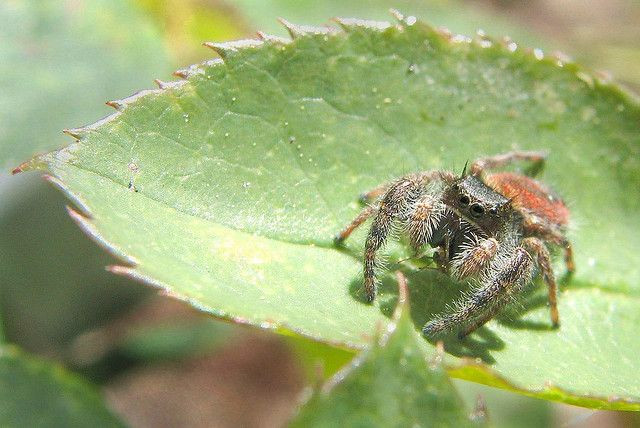
NASA mourned the loss of a proud member of its team Monday: "Nefertiti," a so-called "space spider," died at the Smithsonian's National Museum of Natural History in Washington, D.C. after spending 100 days in space, according to Space.com.
The first-ever jumping spider in space, Nefertiti traveled 42 million miles through the cosmos before returning to Earth in October. The experiment was designed to determine if a spider dependent on gravity for catching its meals would be able to adapt and eat in micro gravity.
According to the Boulder Daily Camera, the spider was able to hunt down fruit flies in her sealed space environment on the International Space Station. The spider managed to survive despite a miscalculation on the amount of food needed for the mission.
The Johnson jumping spider (species Phidippus johnsoni) arrived at the Smithsonian's Insect Zoo this past Thursday, however, by Monday, it was deceased.
The Boulder Daily reported:
"Neffi, of a species that typically enjoys a lifespan of about one year, was 10 months old. Monday's passing of the so-called "spidernaut," according to the Smithsonian, was due to natural causes. However, the Smithsonian conceded that no necropsy was performed on the deceased arachnid.
The experiment that made Neffi famous was conceived as part of the NASA-sponsored YouTube Space Lab contest in which two student-proposed studies were selected from thousands submitted worldwide by video. Amr Mohamed, 18, of Egypt, suggested examining whether a spider normally dependent on gravity for catching its meals would be able to adapt, and eat, in a micro-gravity environment."
Mohamed's project was designed to look at whether jumping spiders, like the zebra and red-backed species, can adapt their hunting abilities to microgravity, NASA said. Jumping spiders do not build webs for catching their food; they hunt using their excellent vision to track and stalk prey, jumping and striking with a fatal bite.
"I have always been fascinated by science because with a handful of equations, I can explain the world around me," said Mohamed in his Meet the Winner YouTube video. "The idea of sending an experiment to space is the most exciting thing that I have ever heard in my life."
Mohamed's experiment was ultimately designed by Colorado University. It demonstrated that a spider was able to hunt down fruit flies in her sealed space environment on the International Space Station just fine, until her food supply ran out, explained Stefanie Countryman, the projects manager for K-12 Educational Projects at CU's BioServe Space Technologies.
Kelly Carnes of the Smithsonian told the Los Angeles Times: "The unexpected loss of this special animal who inspired so many imaginations will be felt throughout the museum community ... The body of Nefertiti will be added to the museum's collection of specimens where she will continue to contribute to our understanding of spiders."
© 2025 Latin Times. All rights reserved. Do not reproduce without permission.




